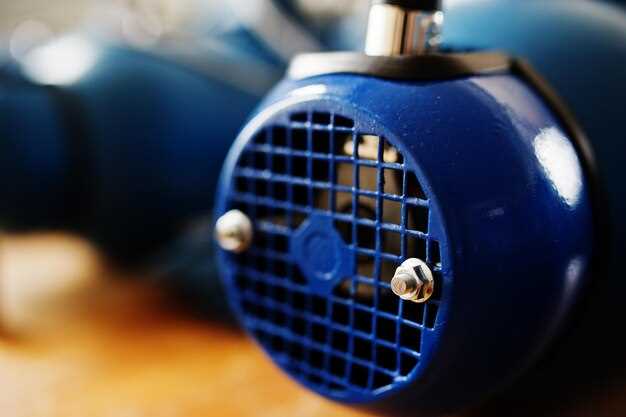
How to Troubleshoot a Blower Motor Issue
- Arthur Rodriquez
- 0
- Posted on

The blower motor is a crucial component in various heating and cooling systems, responsible for circulating air throughout spaces for optimal comfort. Understanding its function helps in identifying potential issues that can arise over time. When the blower motor malfunctions, it can lead to reduced airflow, increased energy consumption, and even system failures.
Common signs of blower motor problems include unusual noises, inconsistent airflow, and the motor failing to operate entirely. Addressing these issues quickly is vital to ensuring the longevity of your system and maintaining a comfortable environment. To effectively troubleshoot blower motor problems, it’s important to isolate the symptoms and examine the underlying causes impacting motor performance.
In this article, we will explore the typical problems associated with blower motors, providing detailed insights into their possible causes and practical solutions. By following this guide, you can efficiently diagnose and remedy blower motor issues, ultimately restoring functionality and performance to your heating and cooling system.
Identifying Symptoms of a Failing Blower Motor
Recognizing the symptoms of a failing blower motor can save you time and money in repairs. Addressing these issues early can prevent more extensive damage to your heating or cooling system. Here are some common indicators:
- Weak Airflow: If you notice a significant drop in airflow from your HVAC system, it may be a sign that the motor is struggling to operate efficiently.
- Strange Noises: Grinding, rattling, or squeaking sounds coming from the blower motor indicate mechanical issues that need immediate attention.
- Frequent Cycling: If the blower motor turns on and off frequently, it may be overheating or experiencing electrical issues.
- Burning Smell: A burnt odor could suggest that the motor is overheating or that there is an electrical short. This is a serious issue that needs to be addressed quickly.
- Inconsistent Temperatures: If some areas of your home are too hot or too cold despite normal thermostat settings, the blower motor may not be distributing air effectively.
Understanding these symptoms can help you decide if it’s time to fix or replace your blower motor. Regular maintenance and monitoring can extend the life of your system and improve efficiency.
Steps to Diagnose Electrical Issues in Blower Motors

To effectively diagnose electrical issues in blower motors, begin by ensuring safety. Disconnect the power supply to avoid any electrical hazards before you start troubleshooting.
Next, inspect the circuit breaker or fuse associated with the blower motor. If the breaker is tripped or the fuse is blown, reset or replace it, as this might be the simplest fix for the issue.
Use a multimeter to check the voltage at the motor’s terminals. This step helps determine whether the motor is receiving power. Compare the measured voltage to the motor’s specified voltage rating. If there is no voltage, trace back through the wiring and connections to locate the fault.
Examine the wiring for any signs of damage such as fraying or burnt insulation. Damaged wires can lead to poor connections and should be either repaired or replaced. Pay special attention to connections to ensure they are tight and free of corrosion.
Proceed to check the motor’s capacitor if equipped. A faulty capacitor can prevent the blower motor from starting. Use the multimeter to test the capacitor’s capacitance. If it is out of specifications, replace it to fix the electrical issue.
Next, listen for unusual sounds from the motor when attempting to start it. A humming sound with no movement can indicate a seized motor or burnt windings. If the motor is still not operational, consider removing it for further inspection.
Finally, if all electrical components are in order but the blower motor still does not function, examine the motor itself for internal failures. In this case, replacement may be necessary to restore proper blower function.
Repairing or Replacing a Blower Motor: Practical Guide

When a blower motor fails, it’s crucial to determine whether to repair or replace the unit. Understanding the symptoms can help in making this decision. Common signs of a malfunctioning motor include strange noises, insufficient airflow, or the motor failing to turn on.
If the motor is making unusual sounds, it may indicate worn bearings or a damaged fan. In such cases, you can attempt to fix the issue by lubricating the bearings or tightening any loose components. However, if these solutions do not resolve the problem, further inspection is necessary.
Conducting a visual inspection of the blower motor and the electrical connections is essential. Look for frayed wires, burnt connectors, or obvious signs of overheating. If you spot any significant damage, consider replacing the entire motor instead of attempting repairs.
For minor issues like dirt buildup, cleaning the motor can enhance performance. Disconnect the power, remove the motor, and use compressed air to clear dust and debris from the blades and housing. After cleaning, reassemble the unit and test it to see if performance improves.
If the motor continues to underperform or fails completely, it’s likely time for a replacement. When selecting a new blower motor, ensure it matches the original specifications regarding voltage and size. Follow the manufacturer’s instructions for installation to guarantee optimal functionality.
In conclusion, diagnosing blower motor issues accurately will guide you in deciding to repair or replace the component. With careful assessment and appropriate action, you can restore proper functioning to your HVAC system.